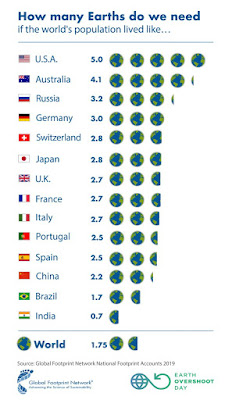The Ground is Melting Under Our Feet
Permafrost is
a defining feature of the Arctic and it is melting as the region warms. When it melts instability follows.
Margaret and Edward Kelly's home is coming apart at the seams.
The joints holding their walls, floors and ceilings together expand and contract as the ground underneath moves, a few centimetres at a time.
The Kellys are one of at least a dozen families in Fort Good Hope who feel threatened as the ground literally shifts beneath their feet. They blame the thawing permafrost, which is shifting the land and the houses that sit on top of it.
The permafrost has strengthened the land underneath the community for centuries. But as climate change warms the permafrost, it leaves the land vulnerable to heavy rain and landslides that carve away huge chunks of earth.
Finally Someone Who Wants to See Your Instagram
Kasim Rafiq is a wildlife biologist working in Botswana. At the end of a very difficult day when he was tried and failed to track down an elusive leopard, he ran into a load of tourists with their guide. The tourist had seen Rafiq’s leopard and several more wild animals and had the photos to prove it. Rafiq realized that maybe his teams pain staking and labor intensive efforts might be being duplicated by truckloads of tourists.
So he and his team worked with a safari lodge in Botswana to analyze 25,000 tourist photographs of wildlife. They used those as sightings of lions, spotted hyenas, leopards, cheetahs and wild dogs. They then compared those data to the estimates they made with traditional wildlife biology tactics: camera traps, track surveys, and “call-in stations”—where they play sounds of distressed animals in the middle of the night and see who pops by.
Turned out that the estimates from tourist photos were just as good as those gleaned from traditional methods. And the tourists were actually the only ones to see elusive cheetahs—the researchers would have missed the cats without the citizen science data. The results are in the journal Current Biology.
My Account Can't Be Empty, I Still Have Checks
It’s taken us only 209 days to burn through a year’s worth of resources — everything from food and timber to land and carbon. We are using up nature 1.75 times faster than it can be replenished. To do this sustainably, we would need the resources of 1.75 Earths.
These latest figures come from Global Footprint Network, an international nonprofit that calculates our annual ecological budget and the date at which we exceed it. Once we bust through this budget, we start devouring resources at an unsustainable rate.
It’s a pyramid scheme,” said Mathis Wackernagel, CEO and founder of Global Footprint Network. “It depends on using more and more from the future to pay for the present.”
Don't Need It, But We're Going to Build It
The Canadian government (federal and provincial) a recommending the approval of a massive tar sands oil mine. A mine that may not be financially viable and that when in operation will force Canada to miss it’s greenhouse gas commitments for decades.
On Thursday, a joint review panel — representing the federal and Alberta governments — released its recommendations on whether a massive new open-pit mine in the oilsands should proceed.
It recommended Teck’s Frontier Mine get the green light, despite finding it will have significant and permanent impacts on the environment.
The decision now moves to Minister of Environment and Climate Change, Catherine Mckenna, who has until February to issue a decision.
Environmental concerns flagged by the panel include the removal of old-growth forests, the destruction or permanent alteration of fish habitat, the release of a large amount of carbon pollution and the loss of wetlands and areas of “high species diversity potential.
”But, overall, the panel found these impacts were outweighed by economic benefits, saying “the project is in the public interest.”
Bicycle Friendly Cities
One way to reduce greenhouse gases in our cities is by making them more bicycle friendly. Canada is claiming it has the busiest bike lane in North America. The Netherlands say, “hold our beer.”
It was very controversial when it was put in, called "Gregor's Gridlock" after the progressive then-mayor Gregor Robertson. According to the CBC, everybody hated it. The CBC titles its post 'They were saying no one would ride it': 10 years on, Burrard bike lane is N. America's busiest, officials say.
Now of course, it is totally accepted and unremarkable. I never even took a photo of it, and I take a lot of bike lane photos. As one former opponent admits, "None of us had a crystal ball back then," he said. "We couldn't have predicted how popular cycling would become if you made it safer for people.
"But is it the busiest bike lane in North America? I do not believe it for a second. It turns out that it is the busiest bike lane in North America with an Eco-counter, one company's device that is put on significant routes, where it clocked an average of 3,100 per day or 1.3 million per year in 2017. The #2 was Tikkum Crossing in Portland, Oregon, with an average 2,783 counts a day, and #3: Fremont Bridge in Seattle with an average of 2,639 counts a day.




No comments:
Post a Comment